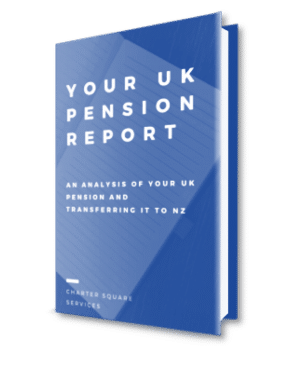- If you are currently transferring your pension to a KiwiSaver scheme action is immediately required to avoid a 55% tax on the transfer
- If you have already transferred into a KiwiSaver you may be stuck in that scheme to 65
- The industry is in shock following recent rule changes – but they were publicised early
The KiwiSaver industry is currently reeling from the 6 April 2015 HMRC QROPS changes which have effectively delisted them all as QROPS. For more information on these changes please go here.
In the rest of this article we talk about the pitfalls that existed with KiwiSaver schemes prior to 6 April 2015 (which was why we were never recommending them). This article also highlights any issues that might arise in the future should KiwiSaver schemes find a way to be reinstated as QROPS.
The pitfalls and positives of a KiwiSaver scheme for a UK pension transfer
The KiwiSaver regime was introduced to help people build a financial nest egg through their own and employer’s contributions. To date it has been successful with most working aged New Zealander’s enrolled in KiwiSaver. KiwiSaver has created simplicity by:
- Members only being able to have one KiwiSaver provider at any time – meaning when someone looks at their KiwiSaver account they see the whole picture
- Making the transfer process between schemes easy for a member– this has recently sparked a battle for churning KiwiSaver customers
- Deducting funds at source, so retirement savings are consistently squirrelled away
So how applicable are KiwiSaver schemes as receiving schemes for UK pension transfers given that KiwiSaver is set up for expressly different purposes and that the KiwiSaver regime is methodologically different from the UK pensions regime (you can have multiple employment and personal pensions in the UK at any one time).
Here we analyse some of the advantages and disadvantages of using a KiwiSaver scheme to receive your UK pension transfer and compare these to using a specifically designed New Zealand superannuation scheme that is registered as a QROPS. It seems fair to say that on the balance we would not recommend KiwiSaver schemes for QROPS as they have significant limitations.
Flexible access to funds – but are the payments unauthorised
KiwiSaver schemes offer more payment flexibility than under UK regulations these are:
- First homebuyers withdrawal – which allows under circumstances some or all of the KiwiSaver funds to be withdrawn at the request of the member (although the scheme rules must allow it)
- Significant financial hardship – this is either through ill health or significant financial pressure. Now while the UK have regulations in respect of payments for ill health this are considerably more stringent than the KiwiSaver rules[1]
- Moving overseas permanently – once the you have been overseas for a year you can withdraw your funds from the KiwiSaver scheme
- Full withdrawal of the funds at age 65 years old
While these flexible benefit structures may look appealing in the first instance they would all be deemed unauthorised payments by the HMRC in the United Kingdom. For the avoidance of doubt an unauthorised payment is ANY payment that is not allowable under the rules that govern registered UK pension schemes. None of the payments outlined above can be made by a registered UK pension scheme.
If the KiwiSaver scheme is a QROPS then it must report ALL payments made out of the scheme where the member has been a member of that particular scheme for less than 10 years. The requirement to report a payment cease after the member has been a member for greater than 10 years and has not been a tax resident in the UK in the current UK tax year or any of the five previous complete and consecutive UK tax years.
If the payment is unauthorised and is reported to the HMRC the HMRC can levy member payment charges, for the above these include:
- The unauthorised payment charge – which is up to 40% of the payment
- And the unauthorised payments surcharge (where the total payment is greater than 25% of the value of the funds) – this is a further 15% of the payment
Together this charge and surcharge are 55% of the amount paid to the member (the technical analysis can be found at www.hmrc.gov.uk/manuals/rpsmmanual/RPSM13104020.htm)
The member payment charges will apply where the member is resident in the United Kingdom when the payment is made (or treated as made), or has been resident in the United Kingdom earlier in the tax year in which the payment is made (or treated as made) or in any of the five tax years immediately preceding that tax year (again refer to www.hmrc.gov.uk/manuals/rpsmmanual/RPSM13104020.htm for the legislative references).
The UK doesn’t care whether the member has contributed non-transfer funds or not
Compounding the situation outlined above is the fact that the HMRC consider that any payment out of a QROPS is deemed to be UK transferred funds first. So despite the fact that a member may have contributed into their KiwiSaver scheme and only want to withdraw their own contributions (not the UK transferred funds) the HMRC will require the payment to be reported.
Therefore, transferring a UK pension scheme into KiwiSaver could significantly disadvantage the member as it would provide an unintended disincentive to withdraw their funds, even if they are eligible. This is particularly highlighted in the case where the individual leaves New Zealand after say three years but would still have to wait out their five UK tax year window before they were able to withdraw any funds.
Switching between KiwiSaver schemes can be fraught with danger – as not all KiwiSaver schemes are QROPS
As previously discussed the Inland Revenue designed KiwiSaver switching to be easy, this would allow the member to take control of their scheme and manage it between providers and workplaces (where workplaces have different schemes). So if the member exited one workplace scheme and joined another the transition would be seamless.
What happens if the next workplace KiwiSaver scheme is not registered as a QROPS and the member has transferred their UK pension into their first workplace scheme (which was a QROPS)? Then theoretically the first scheme should not transfer the funds, as they would not be allowed to under their obligations as Trustees of a QROPS. Why? Because the Trustees should not allow a transfer of funds that would lead to a potential 55% member payment charge. However, this would seem to significantly disadvantage the member as they may not be able to receive the benefits of belonging to their new work place scheme (they would be forced to opt-out) all because they transferred their UK pension.
Worse still would be the position that the first KiwiSaver provider makes the transfer to the second KiwiSaver provider and reports the unauthorised payment under UK legislation. If the member has not been outside of the UK for 5 complete and consecutive UK tax years then the HMRC can levy the 55% unauthorised payment charge on the member. With KiwiSaver schemes being transferred as regularly as two or three times in a year – this situation could get dangerous for members in the future. For the avoidance of doubt a transfer to a non-QROPS KiwiSaver is an unauthorised payment (the guidance on this issue can be found at www.hmrc.gov.uk/manuals/rpsmmanual/RPSM13104030.htm)
With 4 out of 6 of the default providers not being QROPS there is a real possibility of multiple unauthorised payment charges
On leaving your employer with an employer scheme – the Inland Revenue will provisionally allocate you to a default KiwiSaver scheme and give you 3 months to choose your own scheme. If you don’t choose another scheme within 3 months, Inland Revenue will confirm your enrolment in the default scheme. Of the 6 default providers only two of them are registered as QROPS. Therefore, unwittingly the member could find themselves in a position where inaction leads to them being slapped with a 55% unauthorised payment charge.
KiwiSaver schemes are not designed to receive migrants overseas pension funds
There are numerous reasons why KiwiSaver schemes are not the ideal end investment option for UK pension transfers, here we highlight some of the main disadvantages:
- Kiwi saver schemes do not offer pound sterling investment options. With the exchange rate at historical lows members are more inclined to want sterling denominated investments and investment options as well as New Zealand dollar options (as well as the ability to switch between these easily)
- Kiwisaver schemes are not zero-rate PIE’s so there are no tax advantages during transitional residency of joining KiwiSaver
- KiwiSaver schemes do not allow for the transfer of the funds to another scheme overseas should the member emigrate from New Zealand and wish to emigrate their pension with them. The member can only cash in their funds (which as discussed would be an unauthorised payment and potentially subject to unauthorised member payment charges)
- KiwiSaver schemes are administered as KiwiSaver schemes and not as QROPS and are therefore less likely to keep up with rule changes in QROPS (nor believe that they have to)
- KiwiSaver schemes do not allow for the payment of an entry or implementation fee to an adviser to be paid out of the transferred funds, hence the client would need to be charged a direct fee – many clients would find this difficult and would prefer fees to be paid out of their funds
- A well established QROPS will designate that 70% of the transferred value of your funds must be used to provide an ‘income for life’ with a minimum early retirement age of 55. Therefore, access to funds in a non-KiwiSaver QROPS is allowed a lot earlier than a KiwiSaver QROPS
So on balance, there are many issues with KiwiSaver QROPS (in particular being that none are QROPS at the moment). So a transfer of a UK pension into a KiwiSaver scheme has significant risks attached unless both the advisor and member are fully aware of the implications, even then the transfer may jeopardise future options for the KiwiSaver member – a less than ideal situation.
[1] http://www.hmrc.gov.uk/manuals/rpsmmanual/RPSM09104610.htm governs serious ill heath lump sums (12 month life expectancy) and http://www.hmrc.gov.uk/manuals/rpsmmanual/RPSM08100070.htm covers early benefit payment (at any age) on the grounds of ill health



